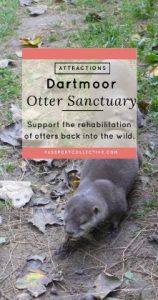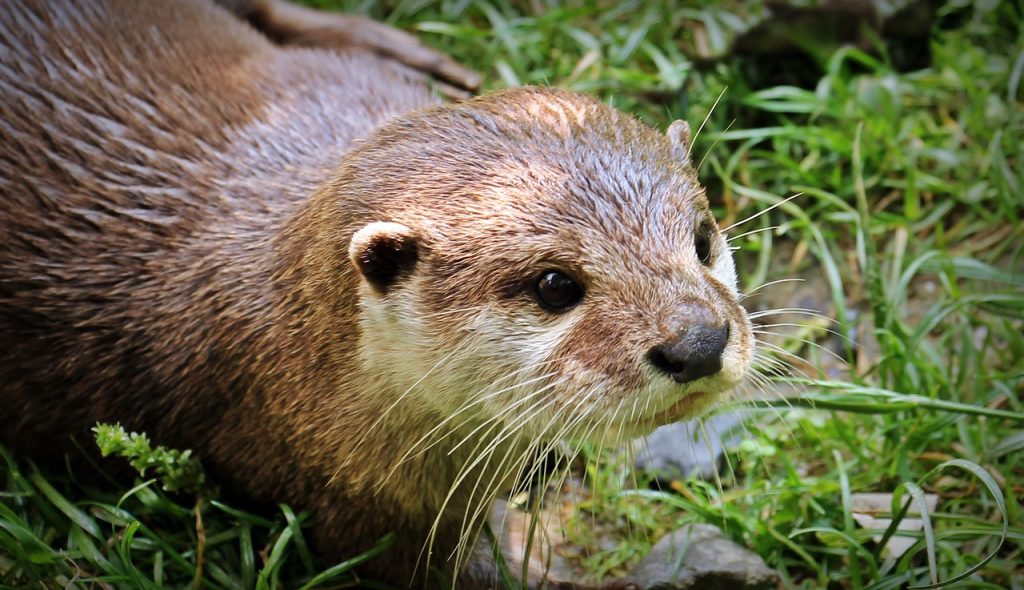We’ve seen squirrels galore and even a badger or two in the East Sussex Wilderness, but we’ve yet to see an otter in the wild. Unfortunately the native otters are almost extinct in our area, with sightings sadly being reduced to finding dead otters. Last year we had hope to go on an otter cruise up in Northumberland, but transport to the region caused us to change our plans and visit Wales instead.
When the opportunity came to see wild otters being cared for with the view of returning them to the wild, we jumped at the chance, and we weren’t disappointed
SUPPORT THE REHABILITATION OF OTTERS AT DARTMOOR OTTER SANCTUARY
How to get to Dartmoor Otter Sanctuary
The Dartmoor Otter Sanctuary is formally named the Buckfastleigh Butterfly Farm and Otter Sanctuary.The sanctuary is located in Buckfastleigh, a small village on the south west border of Dartmoor National Park in Devon.
It is perfectly situated for visit to the national park, or the greater Devon and Cornwall area. It’s a little far from London for a day trip, so we recommend staying in the area.
If you like train travel, its also possible to visit on the Totness main line, by travelling on the South Devon Steam Railway as the station is adjacent to the sanctuary. It is also within driving distance of Bristol and Bath.
The sanctuary also makes a great side trip from Known for its spectacular cliff faces and quaint village.
Whilst you’re in the area
VISIT | The home of cheddar cheese – Cheddar Gorge
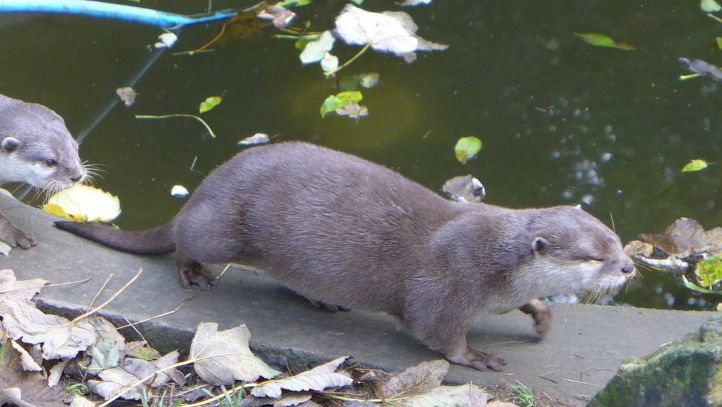
Learn more about the Dartmoor otters at feeding time
The otters at Dartmoor sanctuary are fed three times a day at 11:30am, 2:00pm and 4:00pm ( perhaps a little earlier in the winter to beat the dark). I would suggest planning your arrival time to co-incide with a feeding time so you get to meet the otters.
Feeding time lasts around 30 minutes and gives you the opportunity to meet all of the otters at the sanctuary. We were introduced to our first couple by their keeper Tim, who has been working with otters for over 20 years, and is clearly passionate about his job.
Unfortunately the first two, native British otters, were a little more interested in being loved up than having a snack, and repeatedly refused any fishy treats. They were much more interested in following each other around and collecting straw for their nest than eating!
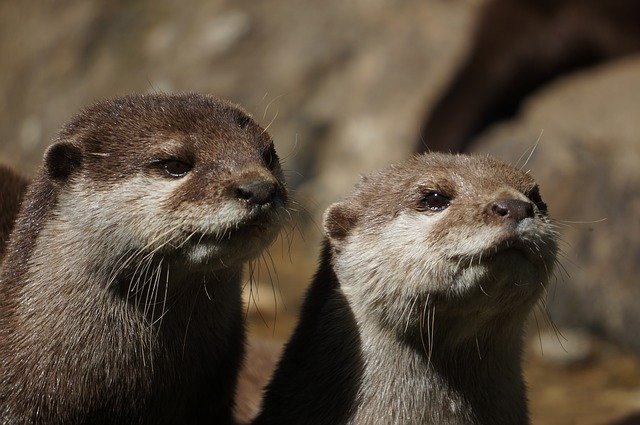
Meet the otters
Unfortunately the first two, native British otters, were a little more interested in being loved up than having a snack, and repeatedly refused any fishy treats. They were much more interested in following each other around and collecting straw for their nest than eating!
Pairing the otters
Next up were an older female otter and a young cub whom she had adopted as her own. Initially she had been a little depressed on her own, but when she was introduced to her new playmate, she did a cute little tail wiggle to signify that they would be friends, and they have been besties ever since.
Interestingly enough, although the older otter had never had any pups of her own, she took to raising the young like well, an otter to water!
The Canadian Otters
Although the centre is primarily a rescue centre, they are home to two Canadian otters, Winnie and Peg. They are the last two remaining otters from a breeding program with a zoo in Canada.
Much larger the the British otters, both girls were keen to put on a show, diving into the water to collect fish and happy to munch away, tails and all!
Keeping the otters happy and engaged
Tim then led us to an under watering viewing area and introduced us to a cheeky otter who despite many attempts to return to the wild, would dash back to the ute and want to return to the sanctuary!
His tame and loving nature means that he loves to show off and perform tricks at the viewing windows. It also means he is very active during the daytime, which is unusual for otters.
He was paired up with a lovely female otter, who’s antics included dashing around with a leaf on her head and barking away for her dinner. They were a lovely and active pair.
Make sure to see Mr Squeaks
By far our favourite was a senior dog otter by the name of Mr Squeaks. Named for his love of squeaking all day, he was in full vocal prowess when we visited. Unlike his younger and bouncier stable mate who would take fish directly from your hand, Mr Squeaks preferred to sit on his rock and squeak until a juicy morsel was sent his way. Of course, if the throw was a little off, he didn’t forget to give you a little look to let you know about it!
14 is quite old in otter years and his age is quite evident to his younger playmate. Otters loose their waterproofness as they age and their fur becomes a paler shade of brown. Despite his age, he still enjoys running around and challenges such as eating live crab without getting pinched, on occasion.
Caring for the otters
The otters in the sanctuary are well cared for. Fresh river water is pumped into their ponds every day and they are never caged. They have lovely large areas with a variety of terrain to roam and are entertained with live food, rocks and other things that are put into their enclosures for them to play and nest with.
Autumn provides a challenge for the staff as they fight the battle of cleaning leaves from the ponds, however the otters didn’t mind it and were using the leaves as bedding. They are very tidy creatures and never mess where they sleep. They also like to have a nice padded space to sleep and change their own bedding regularly.
READ | Want to see more exotic animals that are also well cared for? Visit Marwell Zoo in Hampshire
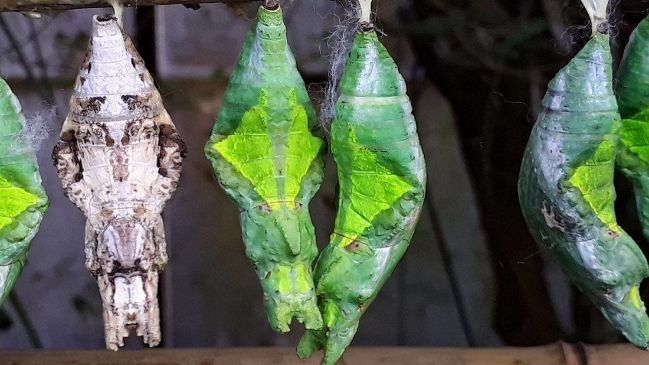
See the Buckfast Butterfly Farm
In addition to being an otter sanctuary, it is also home to Buckfast Butterflies. Entry is included in the single ticket and there are plenty of beautiful butterflies and chrysalises to see. We also appreciated the chance to warm up a little!
As well as butterflies, the butterfly house homes several reptile friends, such as turtles and an iguana. For us, the chrysalises and seeing butterflies hatching was the highlight!
What does it cost to visit Dartmoor Otter Sanctuary?
Entry to the park is very reasonable. An adult ticket is £8.50, a child £6.50 and a family of two adults and two children £26.50. Your ticket allows you multiple entry on the same day, which is great when paired with the South Devon Railway. If you’re a local, you may want to consider a season ticket, starting which costs £40 for adults.
IIs the otter and butterfly sanctuary dog friendly?
Whilst many attractions in the UK are dog friendly, unfortunately otters don’t really like dogs, so you are asked not to bring dogs into the sanctuary.
There are lovely walks nearby and your multiple entry ticket will allow someone to stay outside with the dog should you be travelling with your K9 friend.
Whilst Tim promised us that we ‘may’ see an otter in the wild if we head out at dawn or dusk, unfortunately we didn’t have an evening spare to give it a try. Seeing the otters in the sanctuary and knowing that they are being well cared for with the view of release was the nextbest thing.
We had an excellent time seeing the Dartmoor otters and we were pleased to be able to support the great work they are doing.
